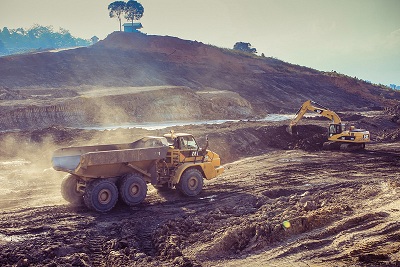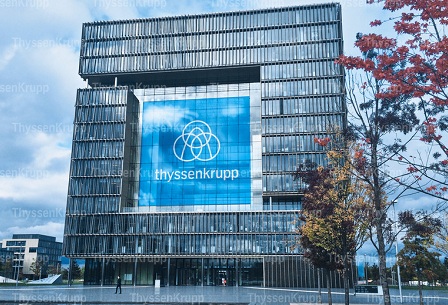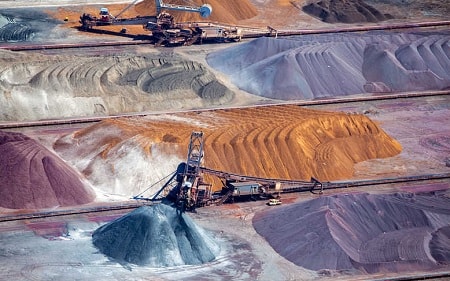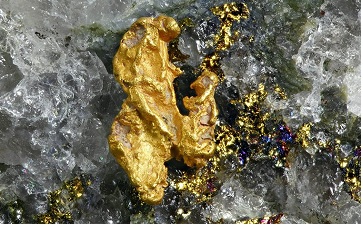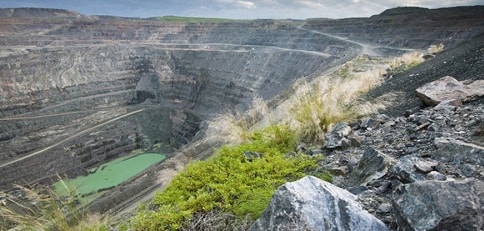Located near Salt Lake City, Utah, US, Bingham Canyon celebrated its 100th anniversary in June 2003. The Bingham Canyon mine, Copperton concentrator and Garfield smelter comprise one of the largest and most up-to-date integrated copper operations in the world: major investments during the past 15 years have ensured economically and environmentally sound operation. Cumulative copper output is now about 17Mt, more than any other mine.
For much of its life, Bingham Canyon was owned by Kennecott Copper Corp. However, during the post-1973 oil crisis shake-out, the company was acquired by British Petroleum, then sold on to Rio Tinto, which operates Bingham Canyon through its 100% subsidiary, Kennecott Utah Copper Corp. The facilities employ about 2,400 people.
In early 2005, Rio Tinto committed $170m to the East 1 pushback project, which will extend the life of the open pit at Bingham Canyon until 2017.
“Rio revealed in 2008 it was studying deepening the 1.2km pit to shore up an extra 2.83 million tons of copper resources.”
Following research from analysts and investors, Rio revealed in 2008 it was studying deepening the 1.2km pit to shore up an extra 2.83 million tons of copper resources.
A major molybdenum deposit was discovered in 2008. Additional porphyry mineralisation was identified beneath the southern wall of the pit. The resources were studied for extraction by open pit mining methods.
However, because of the economic downturn, the option to expand the underground operations was suspended.
Rio hoped to begin the project in 2009 and produce copper valuing about $22.67bn at the prevailing prices.
A major molybdenum deposit was discovered in 2008. Beneath the southern wall of the pit, additional porphyry mineralisation has been identified. The resources are being studied for extraction by open pit mining methods.
In August 2010, Rio announced its Cornerstone project, which is expected to extend the life of the mine to 2034. Rio is seeking permission from the regulators to push the south wall back by approximately 1,000ft and deepen the mine by another 300ft in order to reach more than 700Mt of copper ore.
Rio would need to generate or source 100MW of electricity to power the Cornerstone expansion project. It will also require obtaining 25 of the 70 primary environmental permits relating to air, water and land.
Geology and reserves
The classic copper porphyry orebody is not only huge but also enjoys a fairly uniform distribution of sulphide mineralisation, mainly chalcopyrite. The existing pit will be worked out by 2013, but open pit and then underground mining will continue after that. As of end-2009, proven and probable open-pit reserves totalled 524Mt grading 0.47% copper, 0.044% molybdenum, 0.25g/t gold and 2.08g/t silver. Total mineral resources were 647Mt at 0.477% copper, 0.18g/t gold, 0.034% molybdenum and 2.1g/t silver.
Open-pit mining
The Bingham Canyon pit is now 2.5 miles wide and very deep. Mining uses a rotary drilling/blasting – shovel/truck – in-pit crushing system, with two to four blasts per day. To contain costs, management has been quick to utilise the most cost-effective drilling, loading and haulage equipment and management tools available.
One of the first of the recent series of major investments was an in-pit, semi-mobile gyratory crushing unit linked to the Copperton Concentrator by an 8km conveyor system. This reduced haulage distances from the working faces substantially but even so the mine needs a large fleet of Caterpillar mechanical drive and Komatsu electric-drive trucks, mostly of 218t-capacity, to service ten P&H electric rope shovels.
Dispatching is by the Modular Mining computerised system and Bingham also utilises Thunderbird Pacific’s drill monitoring and logging systems. Both GPS and Glonass are used for precise drill positioning. Germany’s MAN Takraf has upgraded and relocated the semi-mobile in-pit crushing plant and conveyor system to keep trucking distances down.
Ore processing
The Copperton concentrator was expanded in 1992 and fitted with some of the world’s largest SAG and ball mills, and large flotation cells. There are four grinding and flotation lines, sequentially yielding a copper and molybdenum concentrate. The copper concentrate is piped about 27km to the smelter. Until its closure in mid-2001, the older North plant supplied about 20% of the copper concentrate for smelting.
“Rio produces approximately 8% of the world’s molybdenum.”
The current smelting facilities are the result of major investment, comprising a new primary flash smelter and flash converter system, designed by Outokumpu with input from Kennecott, plus a slag treatment plant. The converter treats matte that has been granulated and powdered. The 98.6% copper from the new converter is refined to 99.5% copper in two anode furnaces.
Cast anodes are railed about 3km to the refinery’s electrolytic tankhouse, where marketable high-purity copper is produced and the gold and silver content of the concentrate is also recovered.
Production
Having been regarded as a minor contributor to income at Bingham Canyon, increased world demand for molybdenum has now made it very important. Income from moly sales was just $30m in 2002, but rose to $700m in 2005. The 2008 mine plan was modified to include areas of higher moly content, even at the expense of copper, while the concentrator has also been fine-tuned to optimise moly recoveries, with a second expansion of the moly-recovery circuit commissioned in mid-2006.
Rio produces approximately 8% of the world’s molybdenum and expects to produce 60 million pounds by 2015. In order to improve efficiency, it is constructing an autoclave process in Magna to produce molybdenum instead of outsourcing. The plant is estimated to cost $340m and is scheduled to be completed by 2012. Operations are expected to begin in 2013.




